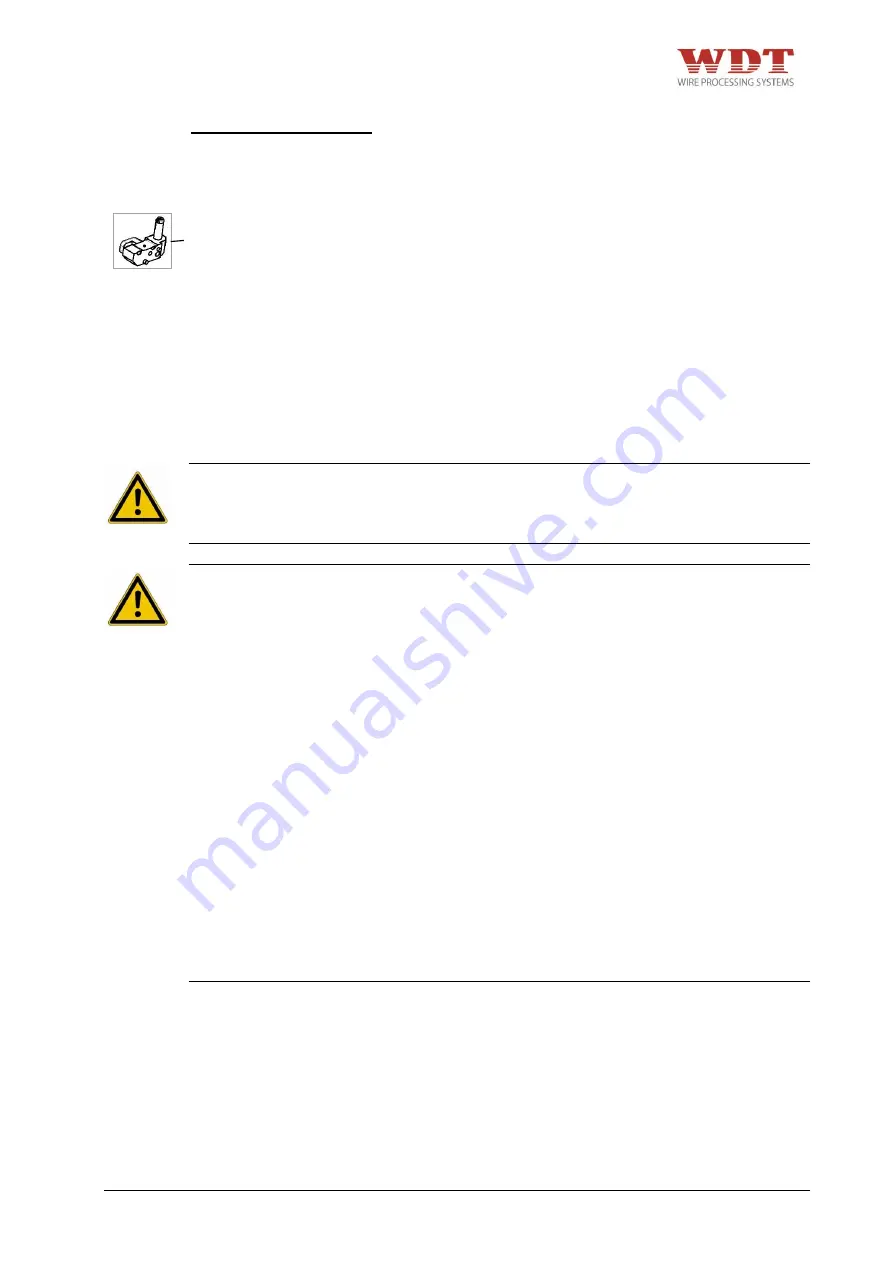
UP35-4481N26000-02/15
– REV.B1
Page 55 / 63
Crimp process with locator:
1. Flap out locator.
2. Insert the crimp contact in the die locator. Please pay attention to the correct profile
assignment and to the correct positioning within the crimp profile!
3. Close and lock locator.
4. Insert the wire/cable which is stripped acc. to the specifications and position it for
crimping.
5. Press the foot pedal to start the crimp process.
6. Keep the foot pedal pressed until the crimp cycle is finished.
7. Open locator and remove crimped contact.
9
Maintenance
DANGER
+
Due to the risk of hand or finger injury, never try to reach into the machine before having
assured that the machine is disconnected from the air supply. Disconnect the air supply
before changing the safety guard, the adapter and the dies.
CAUTION
+
The compressed air connection tube must not be longer than 1 m and has to have a
coupling connection.
+
Before starting maintenance, disassembly or repair work, the crimp machine must be
disconnected from air supply.
+
Maintenance work may be performed only by authorized and properly trained staff. The
housing and the covers in particular may only be removed by specially trained staff.
+
When working with the pneumatic Parallel Crimp Machine UP 35, do not wear loose
clothing, jewellery or long, loose hair that can get caught in the pneumatic Parallel Crimp
Machine UP 35.
+
The crimp machine is only allowed to be used when it is in a completely functional
condition.
+
The crimp machine is only allowed to be used with mounted dies, die adapter and the
suitable safety guard. Pay attention to the correct assignment of adapter to safety guard.
+
Work with caution.
+
Only one person is allowed to work on or with the machine at a time.
+
Assure free access to the operating elements of the machine, especially the foot pedal
and the release button. In the case of imminent danger immediately press the release
button. The release button must be within the direct reach of the operator. It must not be
covered.
+
It is only allowed to work with the specified air pressure























